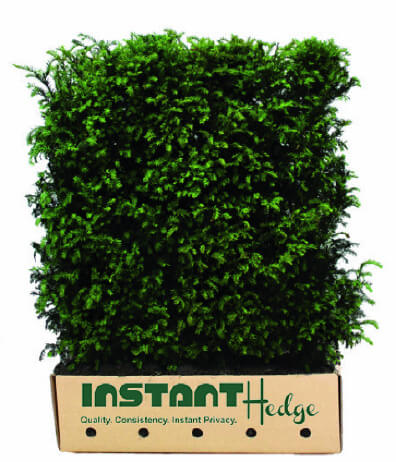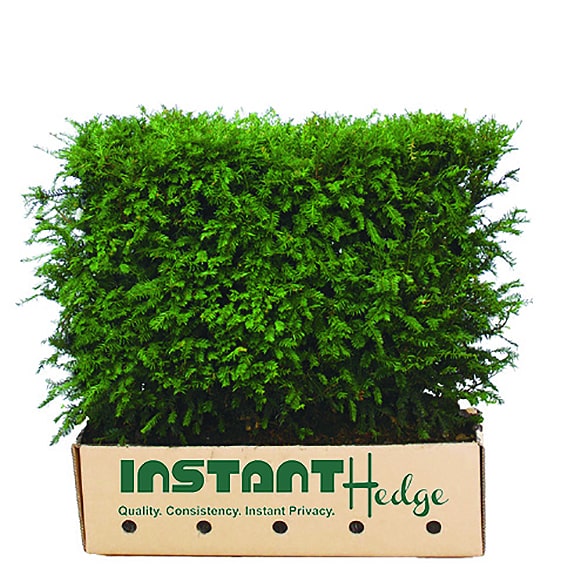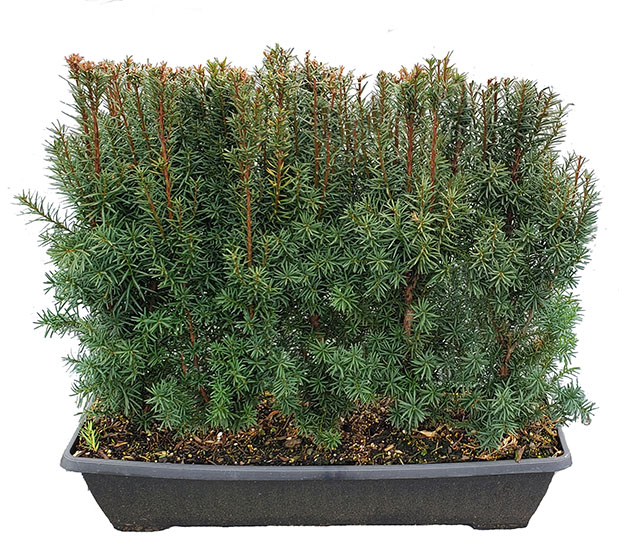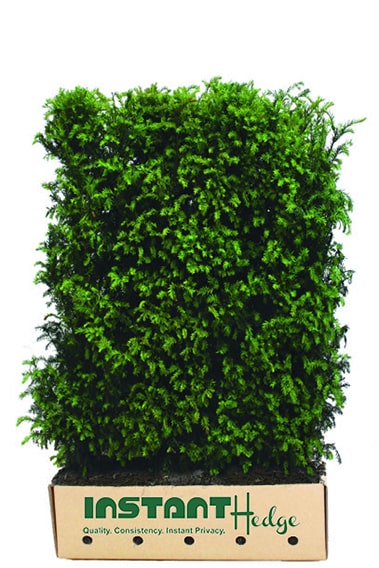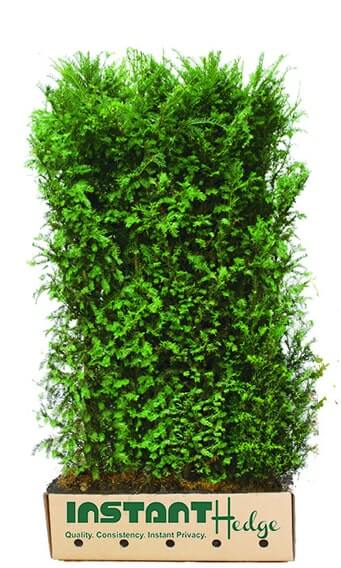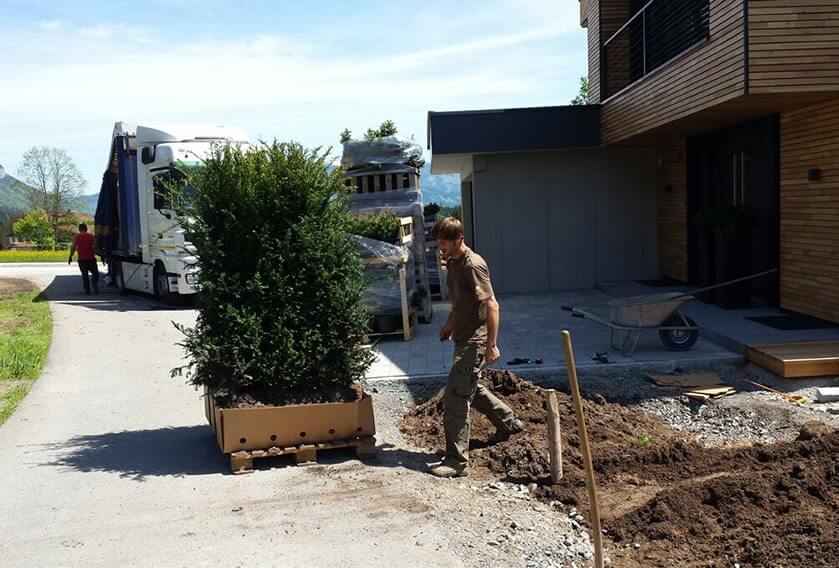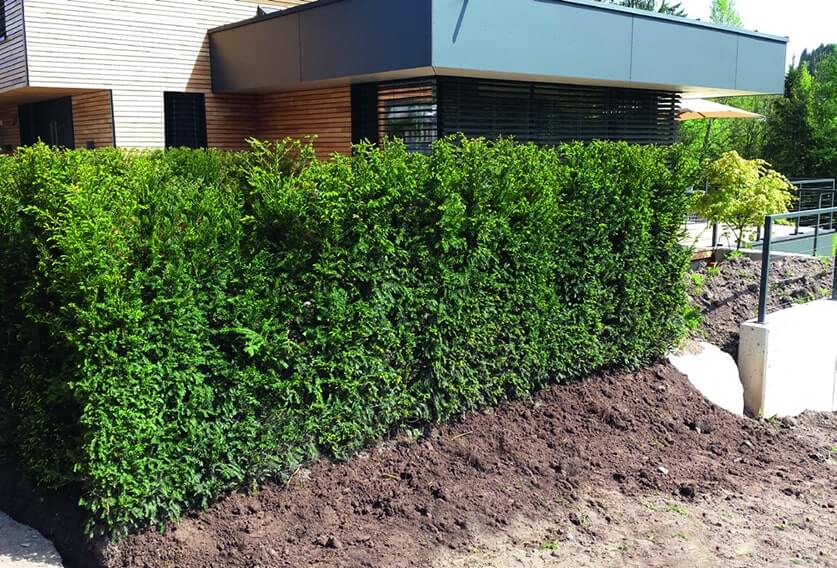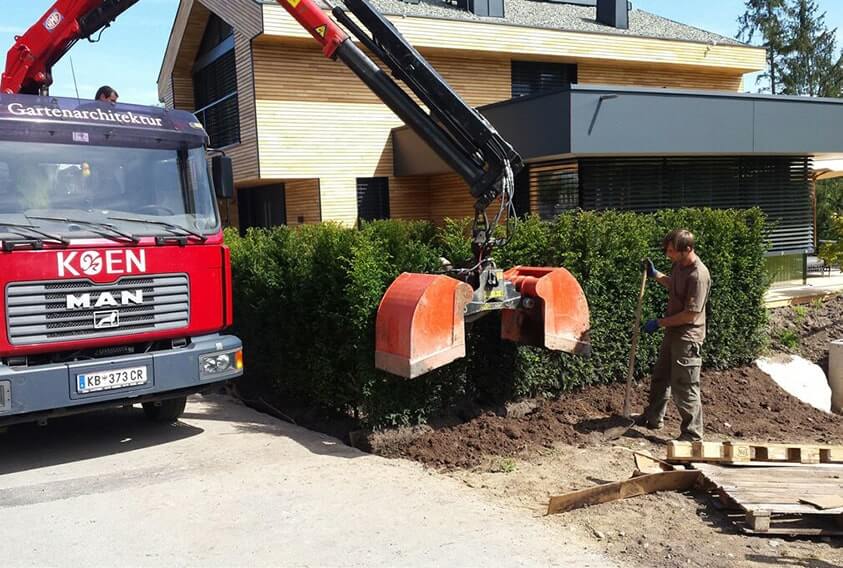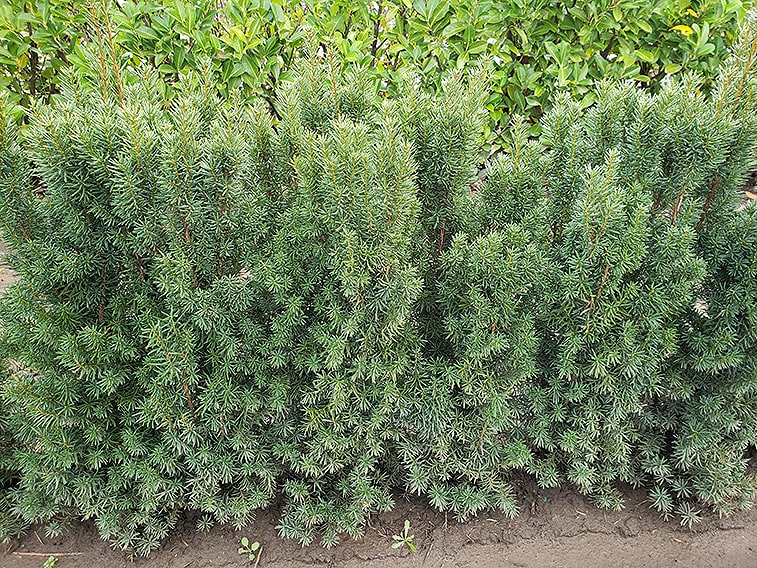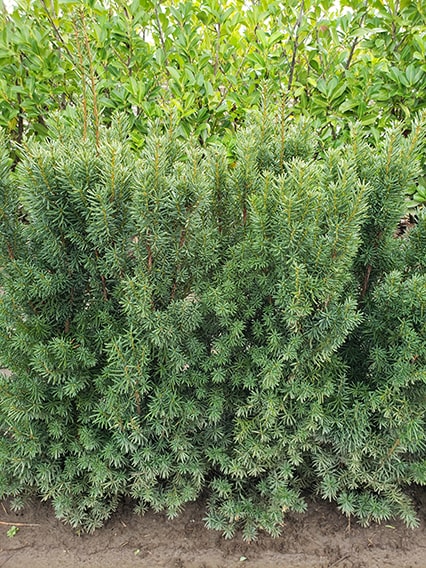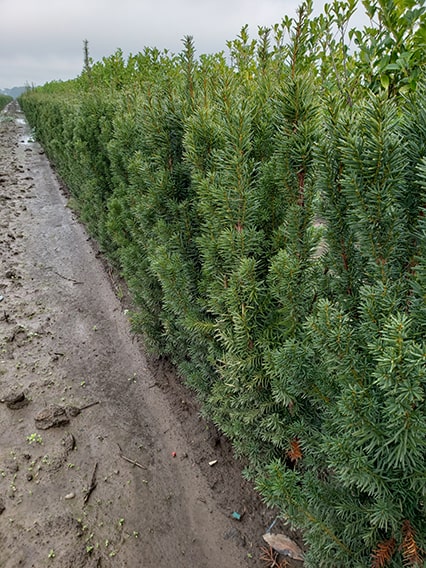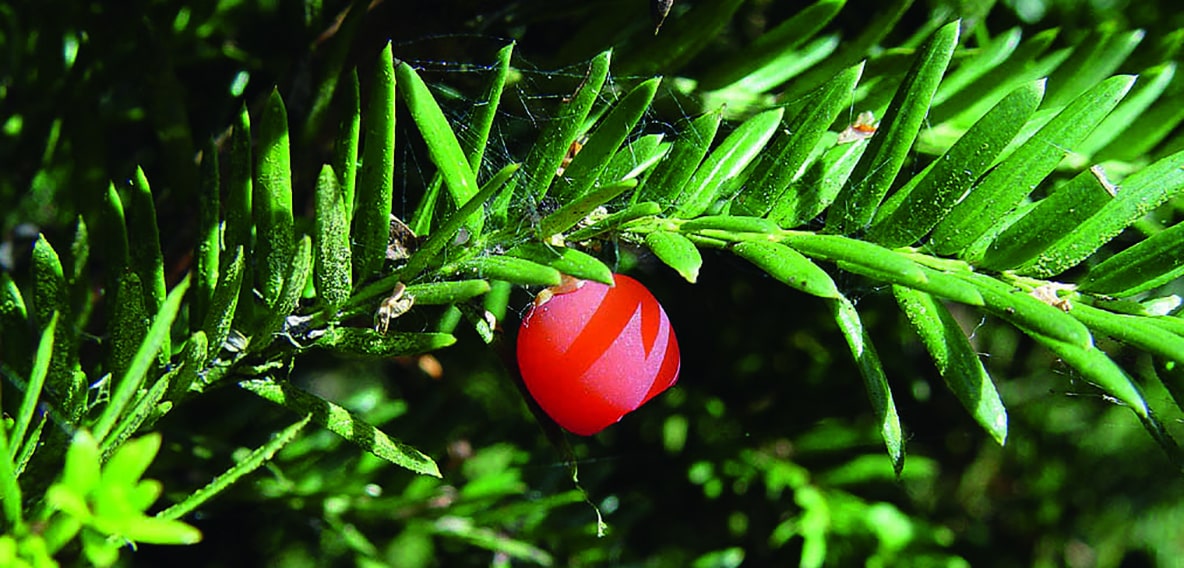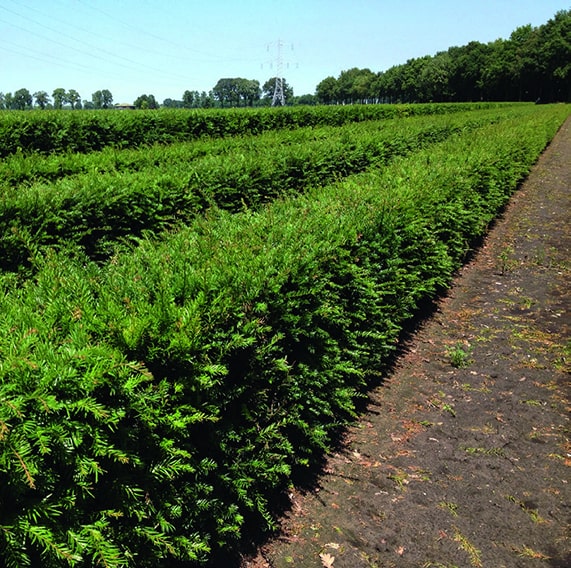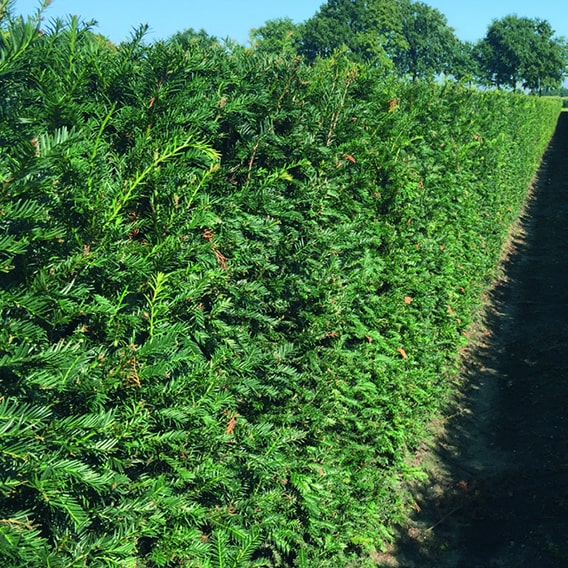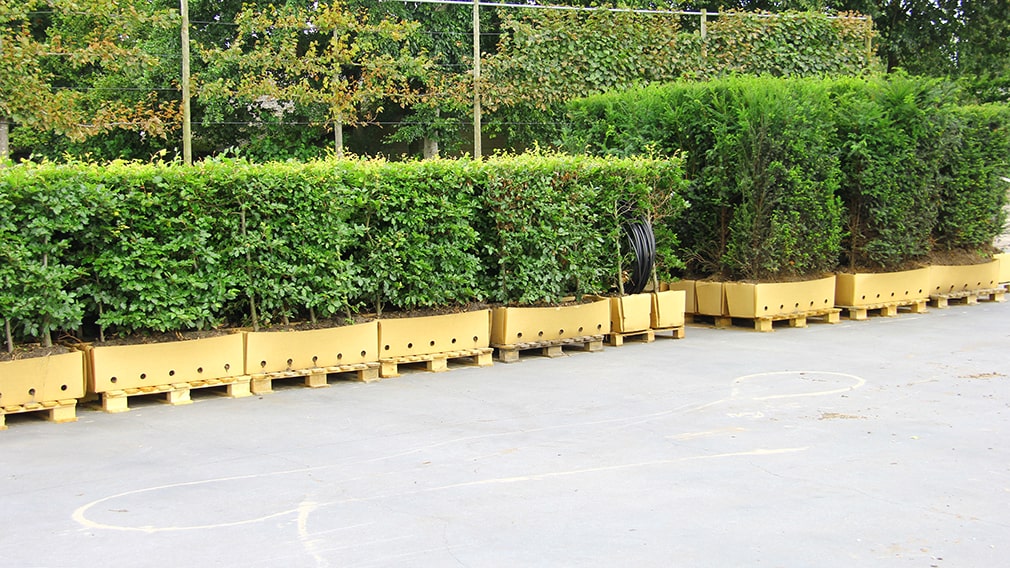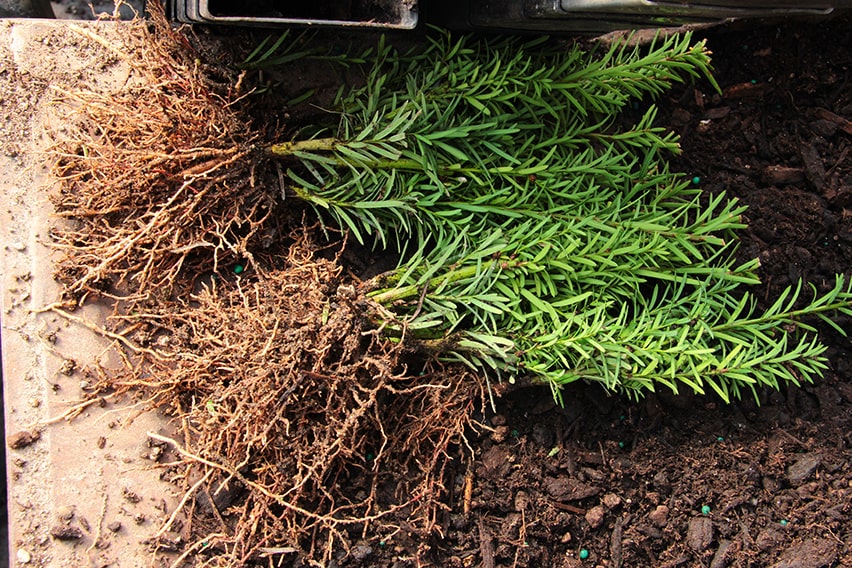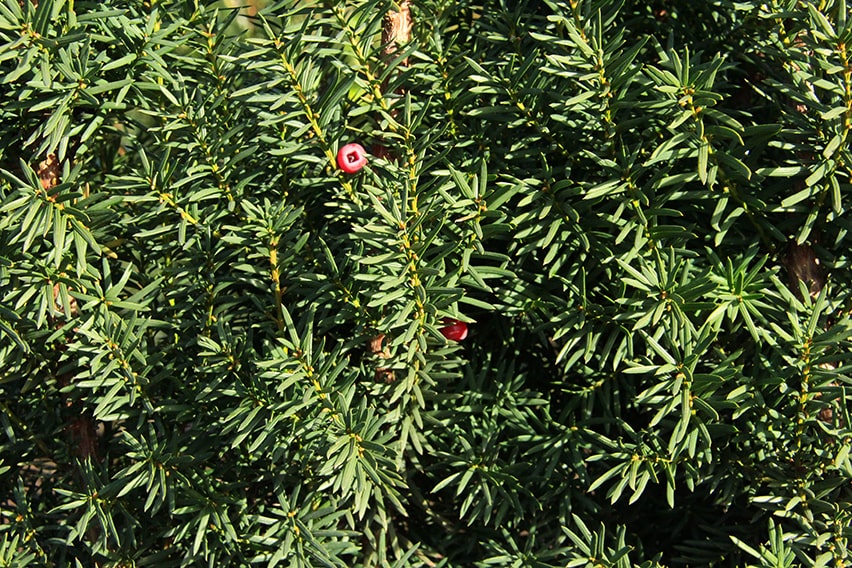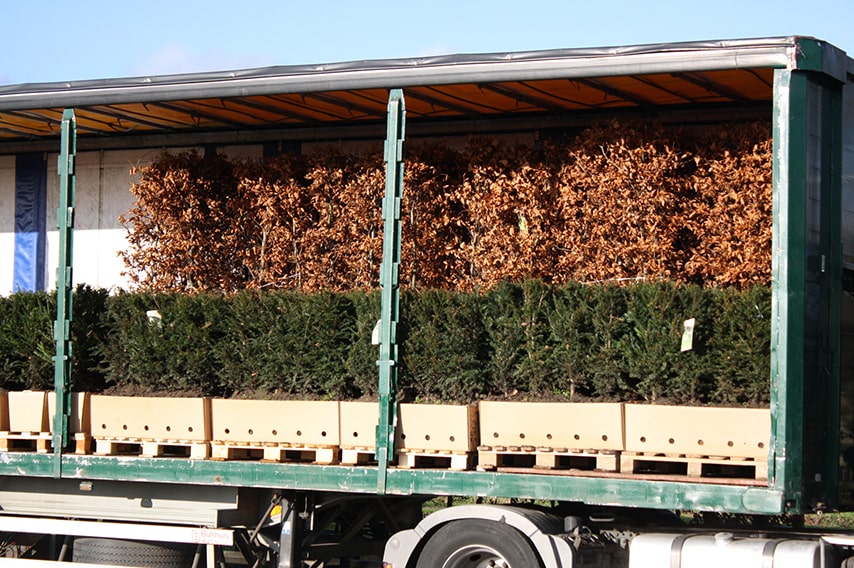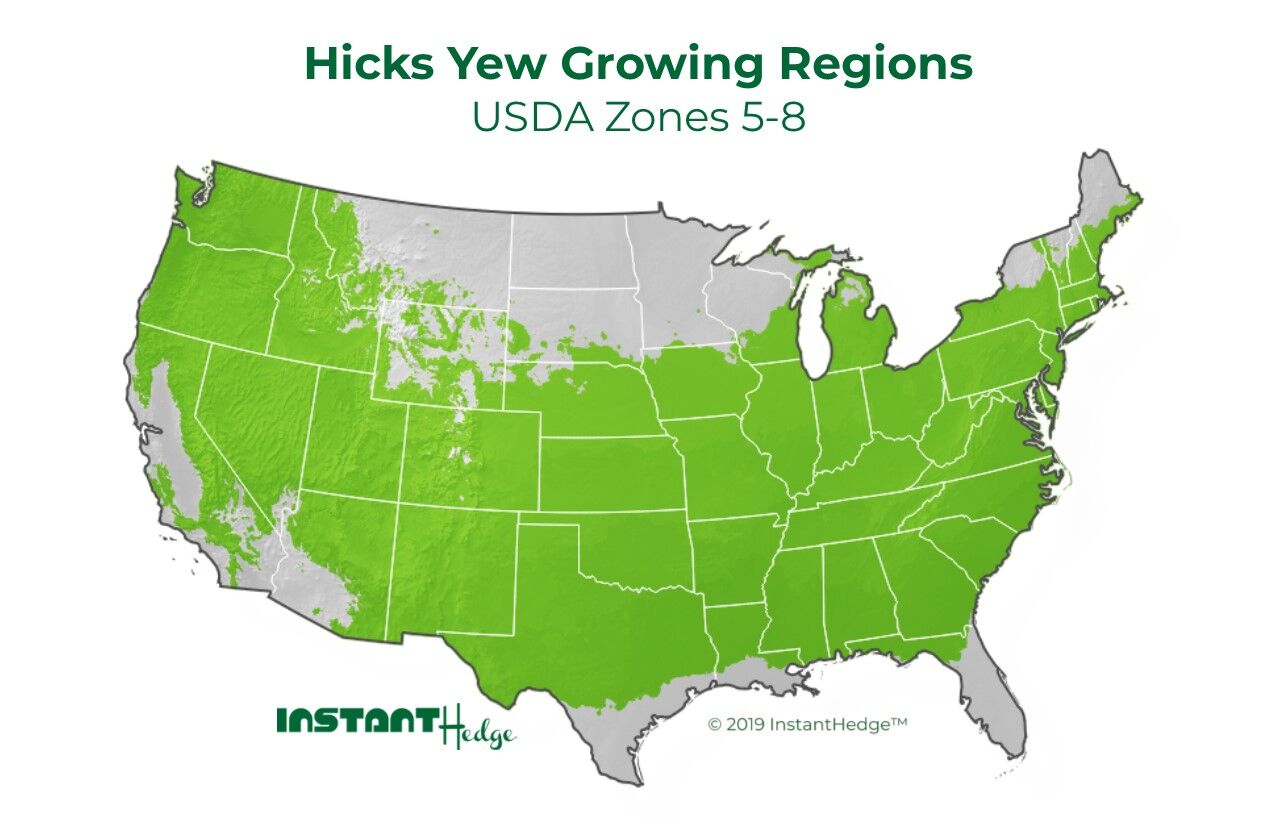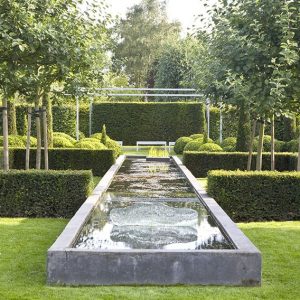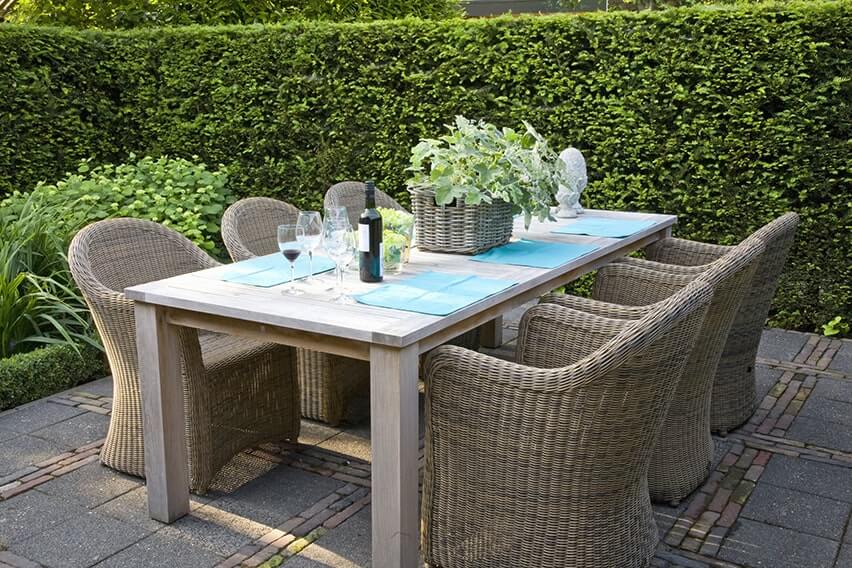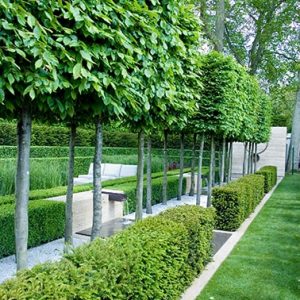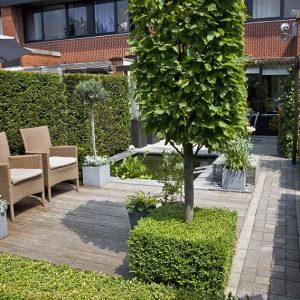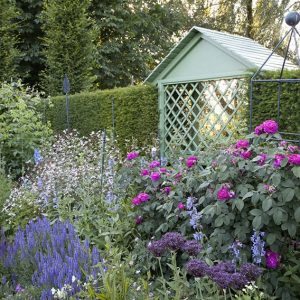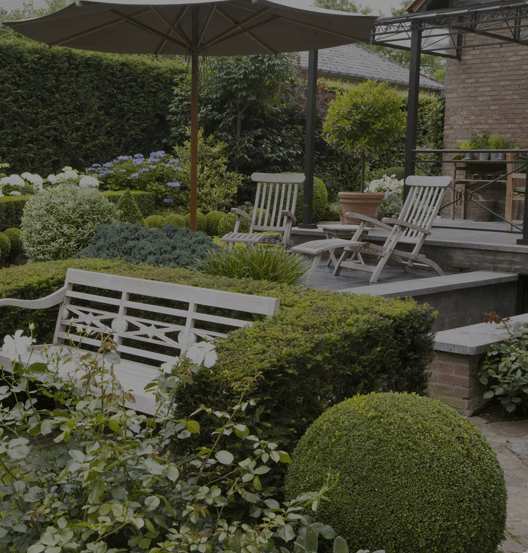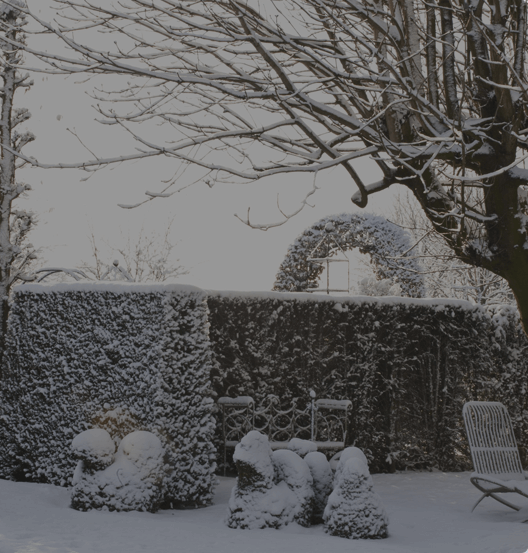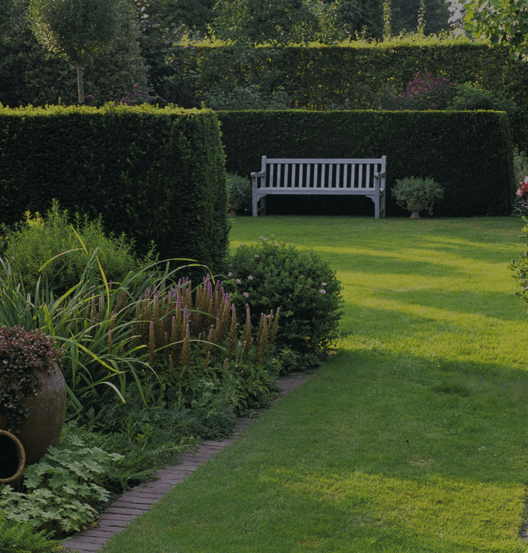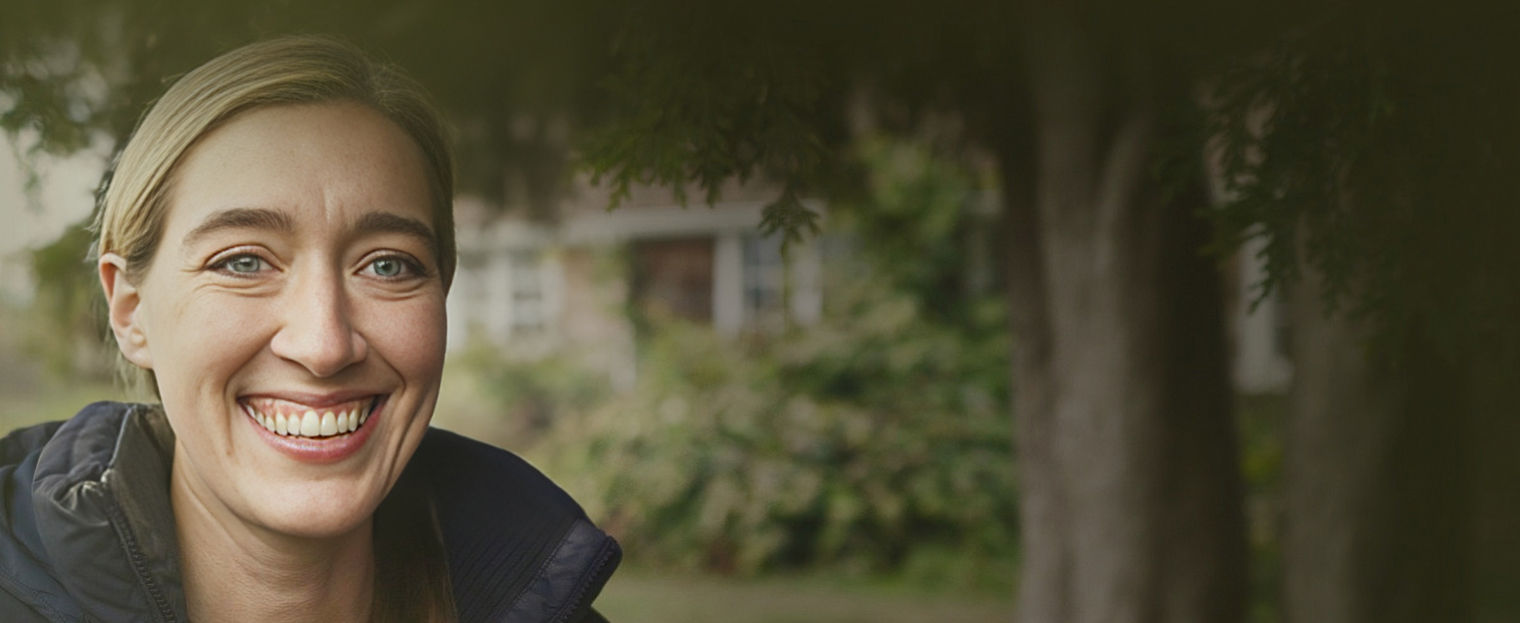WHY CHOOSE HICKS YEW BUSH?
Hicks Yew (Taxus x media ‘Hicksii’) is a plant that was truly bred for hedging in the United States. With lush evergreen foliage, a form and growth rate perfect for hedging, extreme cold-hardiness, excellence in both full sun and full shade, and low maintenance needs, Hicks Yew is one of the most popular hedging choices on the market.
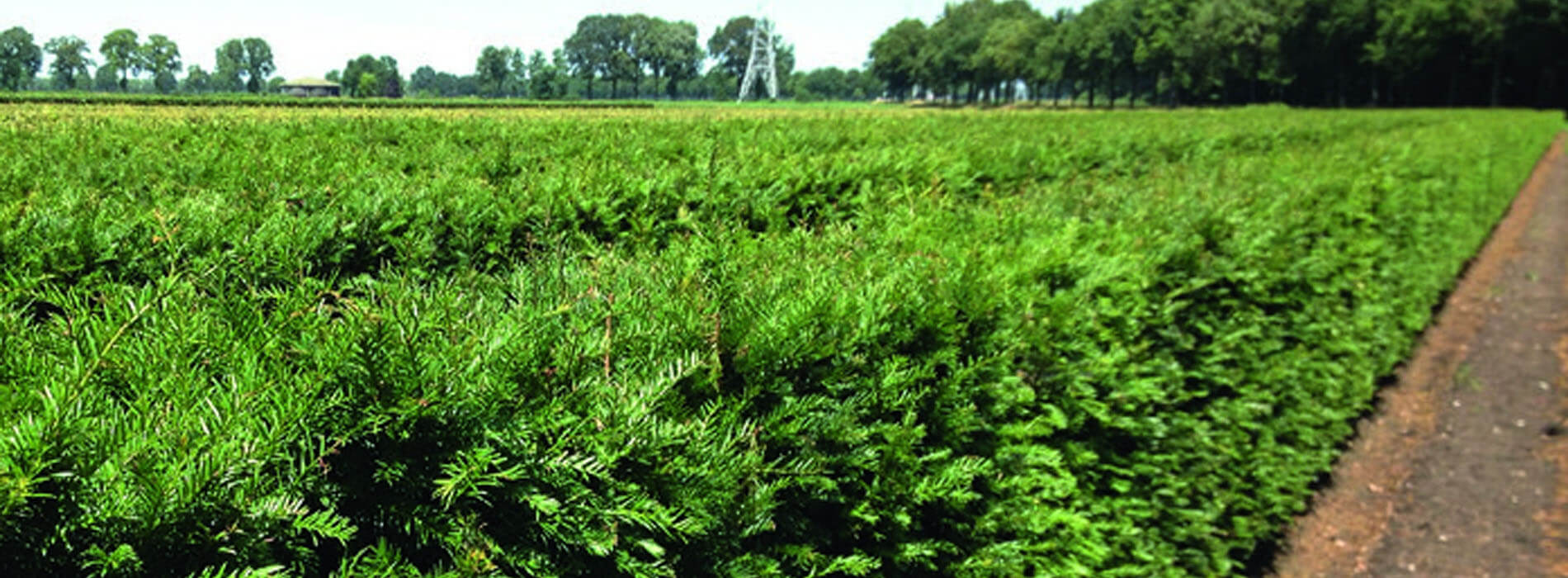
American-Bred
Bred in New York by Hicks Nurseries, Hicks Yew is a cross between English Yew (Taxus baccata) and Japanese Yew (Taxus cuspidata). The result of this cross is a gorgeous hicks yew plant with lovely physical features of the English Yew and the cold-hardiness of the Japanese Yew.
Foliage and Fruit
Hicks Yew (Taxus X Media Hicksii) is an evergreen with fresh, bright green growth in spring and fern-like, dark foliage for the rest of the year. It is lush and dense, with the classic yew look that has been favored by gardeners for reportedly thousands of years.
Hicks Yew hedges also bear attractive bright red fruits, called arils. These are toxic to mammals but are loved by birds.
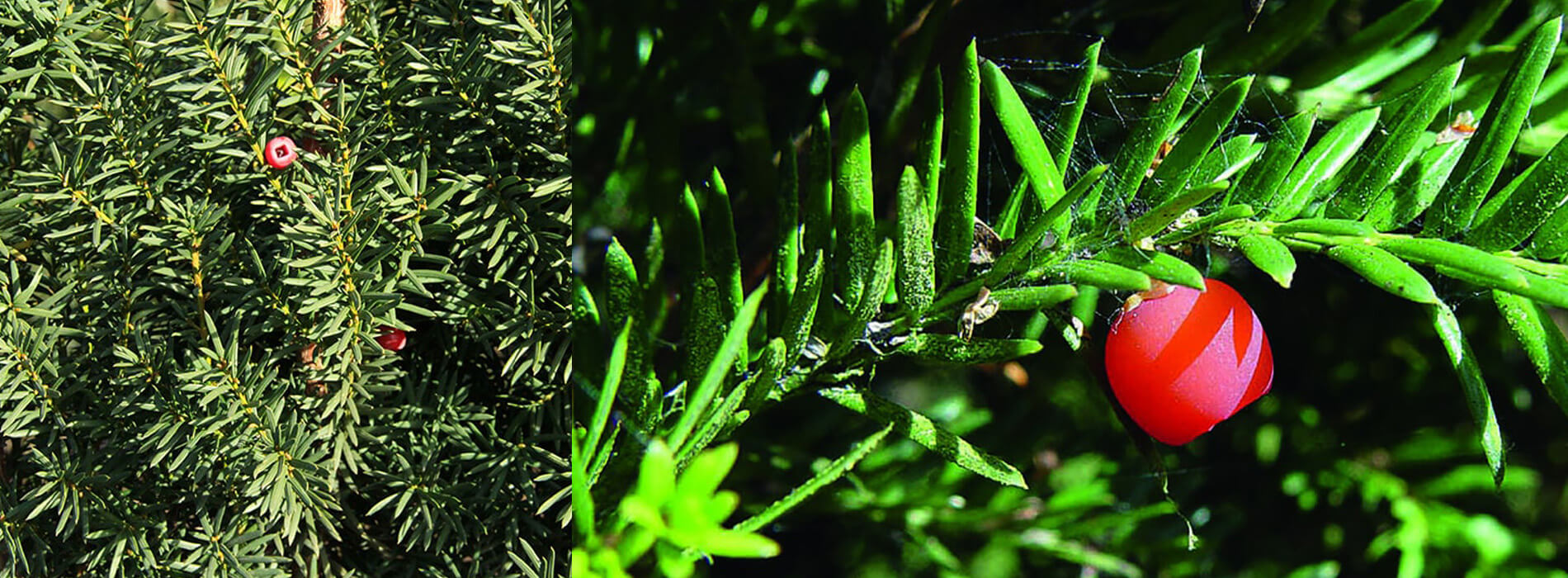
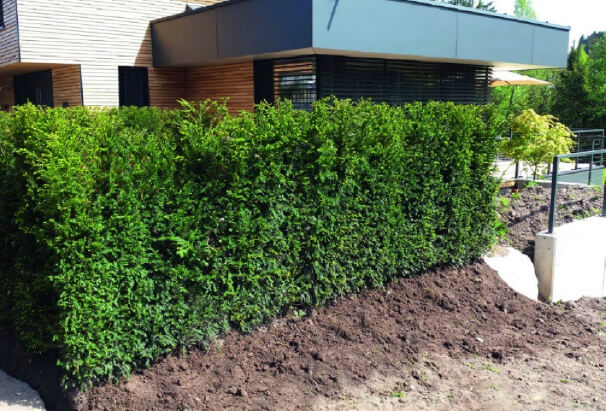
Form
Hicks Yew has a moderate growth rate that is easy to control, but also reaches a good size without having to wait very long. It can reach up to about 18 feet tall at maturity, but is often kept as an 8-12 foot hedge. This vigorous hybrid grows in a tall, upright form. It is easy to keep as a narrow hedge. Hicks Yew Plant is multi-stemmed and primarily grows straight up. Hicks Yew responds very well to pruning and can easily be maintained at any desired size and shape for many years.
Hardiness
One of the top benefits of choosing Hicks Yew for a hedge is its cold-hardiness from the Japanese Yew parentage. Hicks Yew is hardy to USDA Zone 4a and can be easily grown up through Zones 7 or 8. This wide range makes it a great choice for most of the United States.
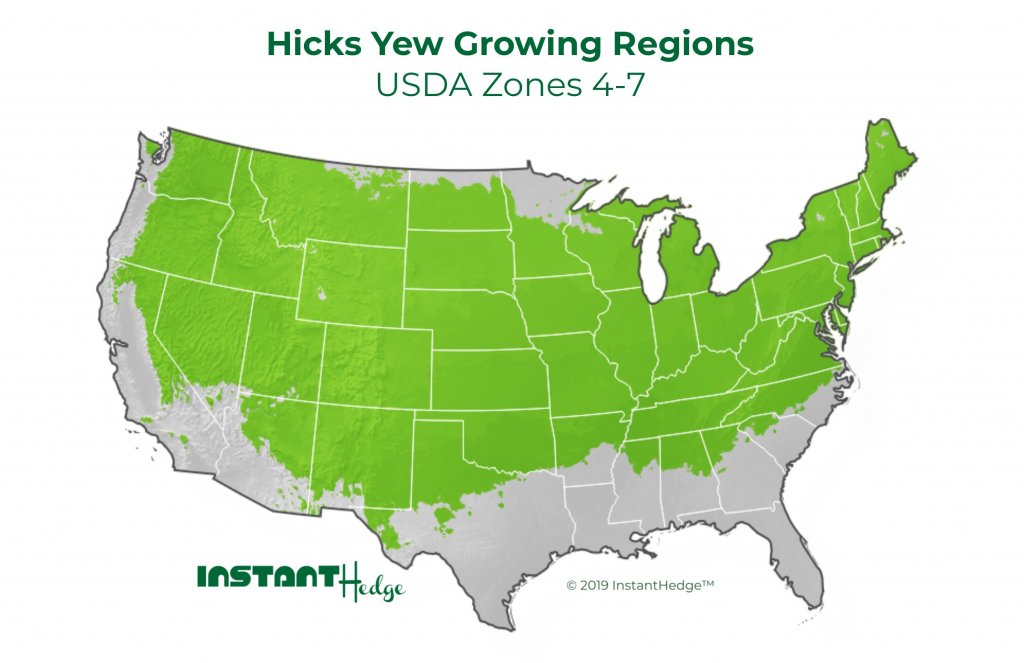
Exposure
Another great thing about Hicks Yew for hedges is its tolerance of all sun exposures, from full sun to full shade. Most other evergreen hedges prefer full sun, and some can tolerate partial shade, but none do as well in deep shade as the Hicks Yew. This flexibility is incredibly useful when designing as exposure doesn’t need to be considered. Hicks Yew truly is one of the best hedges for shade.
Longevity
While Hicks Yew is a relatively new variety, Taxus baccata (one of its parents) is known to be an extremely long-lived plant. There are many examples of English Yew hedges in Europe that are hundreds of years old, and the oldest living yew tree is supposedly between 1,500-3,000 years old. Hicks Yew or Taxus X Media Hicksii specifically has been known to easily live past 50 years under good growing conditions.
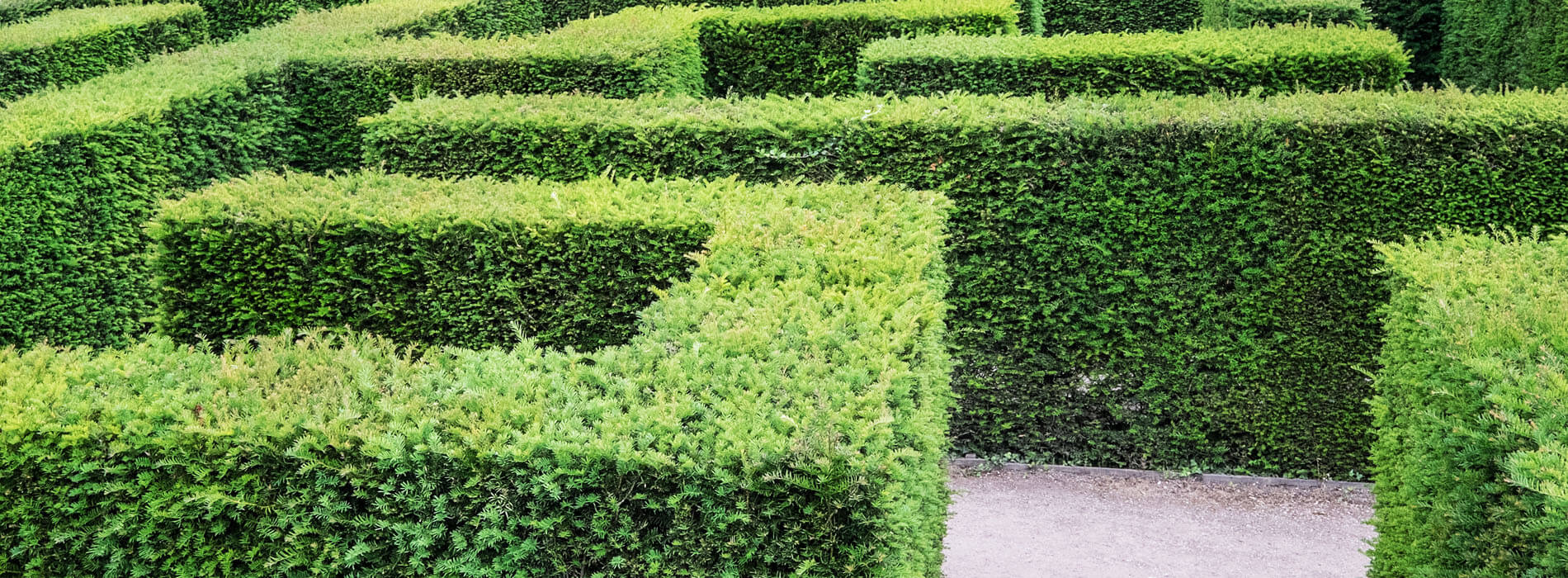
HOW TO GROW TAXUS X MEDIA HICKSII
Taxus X Media Hicksii is a very low-maintenance plant, which is of course an ideal feature for a hedge plant. The only thing it does not tolerate well is wet soil – everything else it can handle. Hicks Yew is easy to plant, easy to irrigate, easy to fertilize, easy to prune…you won’t spend much time maintaining this hedge.
Choosing a Site
Hicks Yew hedge thrives in full sun, part shade, and full shade. It is highly tolerant of urban conditions. It is not picky about soil types and can grow well in poor soils. The only thing you will need to consider is soil drainage at the planting site. Taxus of any kind will not thrive in soggy soil. Amending the soil with organic matter, installing drain systems like tiling or directing water flow toward stormwater drains, and raising the planting site are all good ways to improve drainage.
Planting
You can plant Hicks Yew hedges at any time of year, but the ideal times are fall, winter, and spring. You might try to avoid planting Hicks Yew when it is very hot, especially if there is a lot of fresh new growth on the plants. If you do plant at that time, make sure to keep the hedge well-watered. Amending the soil with some organic matter before planting to help provide nutrients and improve soil drainage. Applying a generous layer of mulch over the roots will help protect them as they grow and establish. Yearly mulching will also improve soil drainage and nutrients.
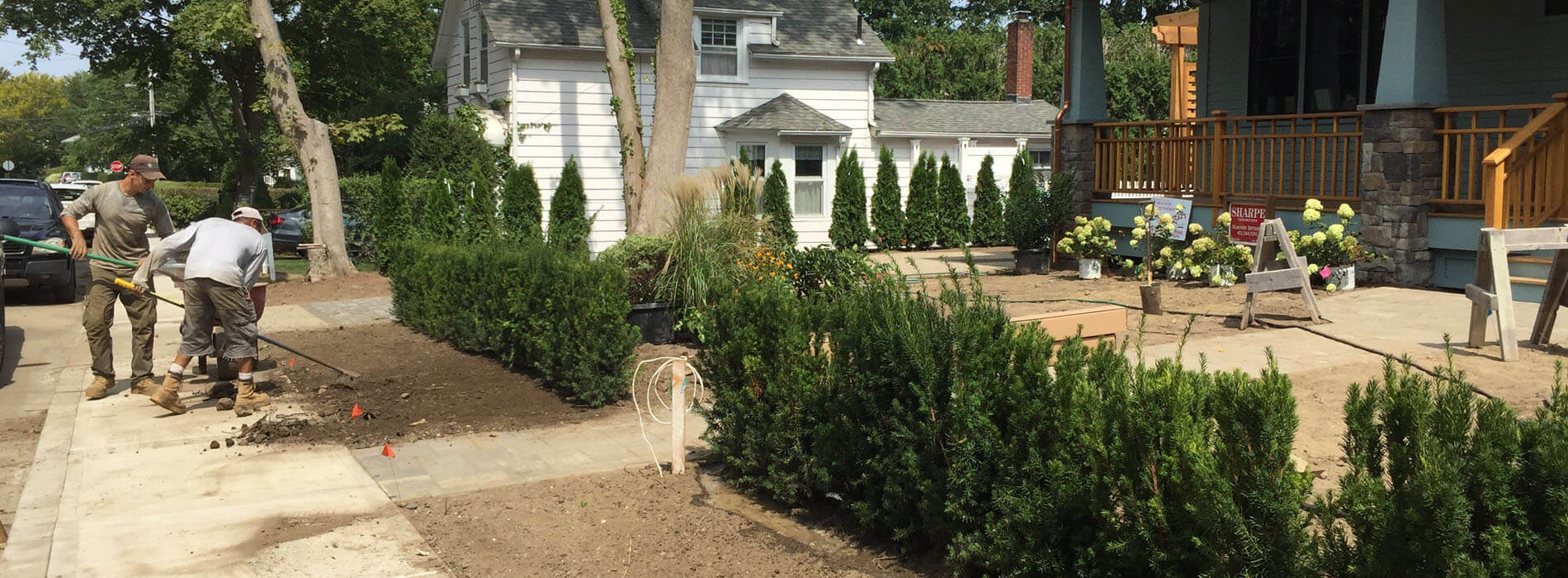
Watering
Once established, Hicks Yew is drought-tolerant. For the first 2-3 years after planting, be sure to add about 1 inch of supplemental water per week in hot, dry periods. Do not overwater – hicks yew hedges do not like wet feet.
Fertilizing
Taxus X Media plants do not have high nutritional needs, but application of slow-release fertilizer at a low rate will help encourage faster growth.
Pruning
Another wonderful thing about using hicks yew as a hedge is that they are highly adaptable to pruning. The best times to prune are early spring or late fall, and it is only needed once per year. A big difference between yews and other conifer hedges like arborvitae is that if you accidentally let a yew hedge get too big and need to prune hard to get its size under control, it will fill back in and do just fine.
Yew can be pruned either with hand shears or an electric hedge trimmer, as long as the blades are sharp.
Pests
Hicks Yew does not have any major pest problems. Deer typically avoid it but may browse especially in winter when other food sources are scarce.
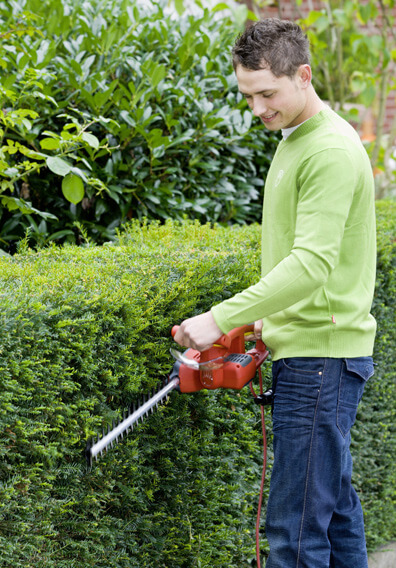
WHY CHOOSE INSTANTHEDGE HICKS YEW SHRUB?
Hicks Yew grows at a slow to moderate pace, so planting a traditional hedge will mean waiting years for a full, finished privacy screen. Finding large plants to begin with can be expensive and difficult, and starting with small plants will mean waiting a very long time and potentially losing individual plants to the stress of being planted too small. There is also the trouble of digging many holes and making sure all the plants are straight upright.
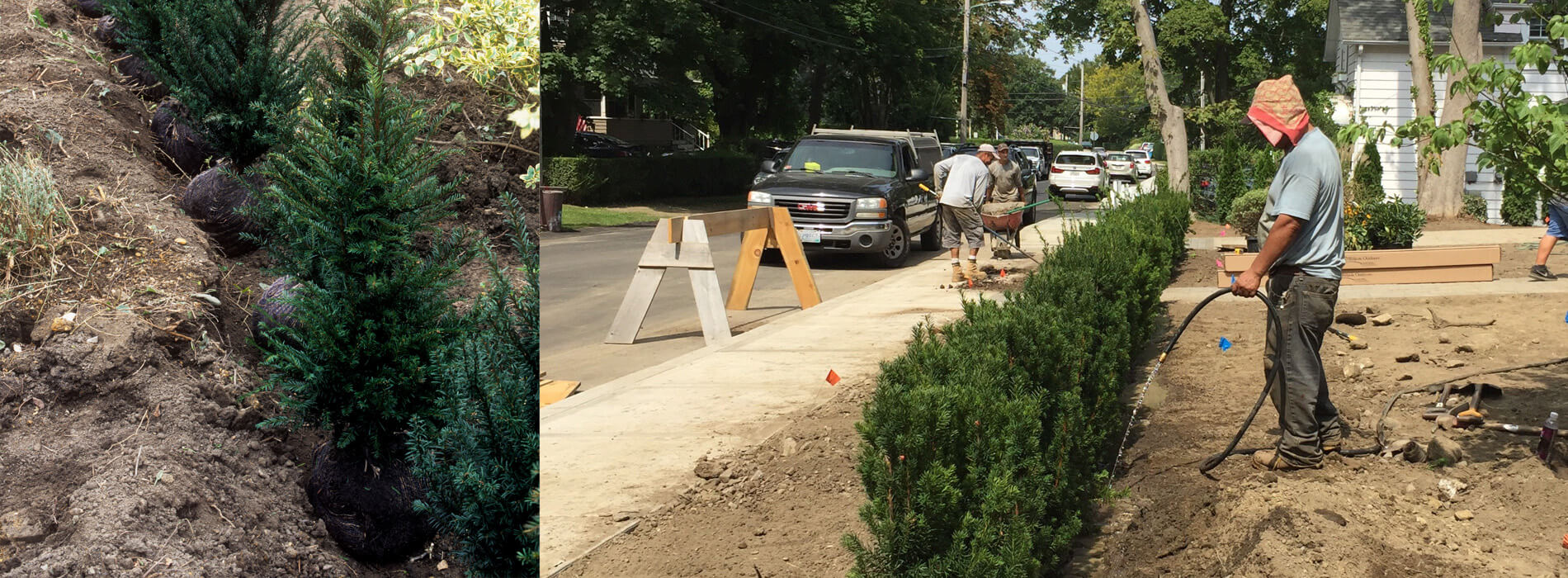
Planting a Hicks Yew InstantHedge means the work of waiting has already been done for you. Simply plant the Hicks Yew hedge units end-to-end in a trench. The InstantHedge hicks yew hedges are pre-spaced, pre-shaped, and pre-finished so that you can have a mature, finished hedge in just one day.
